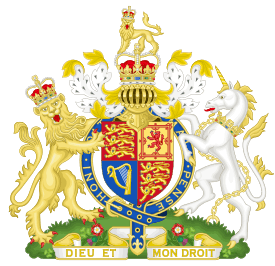Brick tax
| Taxation in the United Kingdom |
|---|
 |
| Government Departments |
|
| Central Government |
| Local Government |
|
The brick tax was a property tax introduced in Great Britain in 1784, during the reign of King George III, to help pay for the wars in the American Colonies. Bricks were initially taxed at 4s per thousand. To mitigate the effect of the tax, manufacturers began to increase the size of their bricks, up to a maximum of 11 inches × 5 inches × 3 1⁄2 inches (280 mm × 125 mm × 80 mm). In response, the government introduced a maximum volume for a brick, at 150 cubic inches (2,500 cm3). The level of taxation was increased in 1794, 1797, and 1805, peaking at 5s 10d per thousand bricks.
One of the consequences of the brick tax was that some minor brick producers went out of business, forced to sell their stock to meet tax arrears.[1] It also had an effect on architecture, with many areas returning to the use of timber and weatherboarding in house construction.[2][3] The tax was abolished in 1850, by which time it was considered to be a detriment to industrial development.[4]
See also
References
Notes
- ↑ Chartered Institute of Building (1994), p. 49
- ↑ Brunskill & Clifton-Taylor (1977), p. 40
- ↑ Stenhouse (1977), p. 47
- ↑ Warren (1998), p. 53
- ↑ Source Guided tour of Hallaton village, Festival of Leicester and Rutland archaeology, 1 August 2010.
Bibliography
- Warren, John (1998), Conservation of Brick, Architectural Press, ISBN 978-0-7506-3091-7
- Journal of the Construction History Society, Volumes 10-15, Chartered Institute of Building, 1994
- Brunskill, R. W.; Clifton-Taylor, Alec (1977), English Brickwork, Ward Lock, ISBN 978-0-7063-5087-6
- Stenhouse, David (1977), Understanding Towns, Wayland, ISBN 978-0-85340-440-8